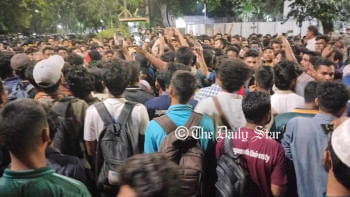Female schooling in Bangladesh
THE secondary school madrasa (known as Aliya) sector is the fastest growing education sector in Bangladesh. Apart from reasons related to economic efficiency, madrasa education has been problematic from a gender view-point, given that, historically, madrasas in South Asia have only educated boys.
Primarily driven by such concerns, the government of Bangladesh has used fiscal incentives to reform the Aluiya madrasa education system by focusing on modernising the curriculum and increasing the share of female students.
To induce modernisation, cash incentives were offered to madrasas if they were officially registered and introduced additional classes on subjects such as science, mathematics, and english. Financial incentives were also given to these madrasas and secular schools to increase the share of female students.
In the years following introduction of the reform scheme, Bangladesh saw the emergence of a large number of registered madrasas. However, it is alleged that they had been set up to exploit the availability of public funds under the modernisation scheme. Nonetheless, such allegations overlooked an important question: To what extent is the growth of registered madrasas a reflection of the underlying reform initiatives?
For instance, the rise in registered madrasas could be because of conversion of traditional madrasas into modern religious schools. More importantly, new madrasas could encourage female education. In this paper, we assess the Bangladeshi experience with madrasa education reform by addressing these two questions.
Secondary madrasa education system in Bangladesh
In the early 1980s, the government introduced programs to modernise the madrasa education system via curriculum reform. In pre-modernisation era, madrasa curricula followed the Deoband-style. Their registered counterparts, albeit few in numbers, followed state approved curriculum. This has changed in post-modernisation years.
The modernisation scheme introduced secular subjects alongside religion-related subjects and languages. Madrasas that accepted this change in the curriculum qualified for public subsidies similar to secular schools. They are known as Aliyah madrasas, and are registered with a government board.
According to government census records for the year 2003, there are 8406 institutions at post-Ebtedayee (primary) level against 17389 secondary schools. Madrasa enrolment accounts for 15% of total PPE enrolment. Two features of Aliyah madrasas stand out from Table 1. First, almost half of the students enrolled are girls. Second, 6% of the teachers are also female. These statistics point out the hitherto overlooked role played by these madrasas in spreading female education.
Impact of madrasa reform schemes
The reform program raises two questions. First, to what extent did the scheme reduce the number of existing traditional madrasas? Second, do modernised madrasas accept reforms regarding admission of female students?
Do the 8,406 new Aliyah madrasas largely comprise of madrasas that have emerged to take advantage of generous government grants, or do they also represent "converts" from old madrasas that previously imparted traditional and exclusively religious education? The number of "converts" can be obtained by working out the total number of Aliyah madrasas that were established prior to 1980 and operated as traditional madrasas in pre-reform period.
This can be ascertained by using data on the year in which a madrasa was established. Such data is available from census records on all registered secondary schools and madrasas in the country. Our analysis indicates that 52% of all Aliyah madrasas in the country were established on or before 1980. These "converted" madrasas accounted for 31.5% of all secondary educational institutions in the country in the year 1980.
Another hallmark of Aliyah madrasas is acceptance of female students and teachers. At the beginning of the reform program in 1980, 1% of madrasa teachers were female. Today, it stands at 6.9%. Secondly, this change is largely a consequence of stipend program. In 1980, only 4.9% of madrasa students were female. However, between 1990 and 2003, female enrolment increased by 39%, to 47%.
Madrasas and MDGs
Is the increase in female students and teachers of the Aliya education system a significant phenomenon? Attaining gender parity in secondary education is a key Millennium Development Goal (MDG) target, but no one has so far studied the role of registered madrasas in fulfilling this important MDG target.
Even a decade ago, boys used to outnumber girls in secondary schools in Bangladesh. Whilst this has been reversed after the introduction of the female stipend program, very little is known about the impact of the program on madrasas or on gender parity. Using multivariate statistical analysis, we find that regions that had more madrasas experienced higher female enrolment following introduction of the female stipend scheme.
The unique features of the Bangladeshi registered secondary madrasa system highlighted in this paper provide important policy leverage in harmonising schooling outcomes among students from diverse educational backgrounds. Our findings suggest that "reformed" madrasas in Bangladesh have gone beyond adopting modern curriculum by altering the age-old practice of educating predominantly male students and embracing girls.
This scenario is in stark contrast to other countries in South Asia (and elsewhere) with large Muslim populations, where most religious seminaries are of traditional types, predominantly boys only, and still untouched by any significant changes in curriculum.
Our study suggests that fiscal incentives can be used to modernise madrasa curriculum and pry them further open to female admission. On an optimistic note, the very fact that this was possible in Bangladesh, which has the world's second largest madrasas secondary school system, should be encouraging for other countries with a large Muslim population currently grappling with similar issues of curriculum reform and gender equity.
On a broader note, instead of "knee-jerk" reactions against madrasas, researchers and critics should instead focus on what is being taught and actually learnt in these educational institutions -- both religious and secular public-aided institutions that particularly serve the rural poor.
Mohammad Niaz Asadullah is Lecturer, Department of Economics, University of Reading, UK.
Nazmul Chaudhury is Senior Economist, South Asia Human Development.

 For all latest news, follow The Daily Star's Google News channel.
For all latest news, follow The Daily Star's Google News channel. 



Comments